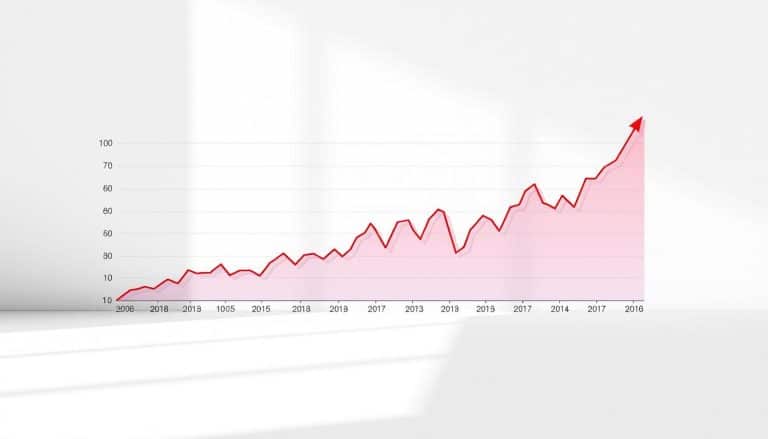Xrp Milestones And Performance
Ripple (XRP) is a digital asset that was developed to allow for secure, fast and low-cost global payments. It was released in 2012 as part of the open source Ripple Protocol, which also includes the RippleNet payment network. XRP is used to enable real-time cross-border payments and remittances in over 40 currencies. Since its launch, XRP has seen significant milestones and performance gains that have further cemented its position as a major player in the global financial market. This article will explore the key milestones achieved by XRP since its launch, assess its current market performance, review the regulatory environment surrounding it, discuss some of its security features and wallets available to users and finally consider potential use cases for enterprises through an examination of how XRP will shape the future of payments.
Launch of XRP
The launch of XRP in 2012 marked a major turning point for the cryptocurrency market, offering new prospects for investors and financial institutions alike. The introduction of XRP allowed banks to settle payments more quickly and efficiently than before. By eliminating the need for liquidity requirements, it reduced the time required to process transactions from days to seconds, while also providing faster transaction speed at a fraction of the cost. This made it an attractive option for businesses looking to streamline their operations and gain access to global markets with increased speed and efficiency. With its wide range of features, XRP was able to revolutionize the traditional payment system by providing a secure platform that enabled real-time global money transfers without delays or high costs. As a result, it has become increasingly popular among financial institutions as they look to leverage its benefits in order to improve their services and increase profitability.
As RippleNet grew in popularity, so too did its ability to facilitate cross-border payments with greater speed and accuracy than ever before. Not only did this open up new opportunities for financial organizations worldwide but also created potential solutions for existing challenges within traditional banking systems. From delivering improved security measures such as two-factor authentication processes and multi-signature wallets, RippleNet demonstrated how blockchain technology could be utilized on a larger scale by institutions seeking greater transparency and trustworthiness in their operations. Through these advances, RippleNet has continued to make progress towards becoming one of the most innovative platforms in the fintech industry today. Moving forward, Ripple’s success is likely dependent on its ability to maintain these competitive advantages against emerging technologies such as Libra and other similar alternatives that may arise over time.
RippleNet
RippleNet is a global payments network that enables financial institutions to process cross-border transactions quickly, cost effectively, and with certainty. It is a real-time gross settlement system (RTGS) and currency exchange network built on distributed ledger technology. RippleNet was launched in 2012 by the digital payments company Ripple, with the goal of allowing banks and money service providers to send money across borders instantly and reliably. The network makes use of the native cryptocurrency XRP as an intermediate asset for liquidity purposes, allowing users to facilitate cross-currency transfers without having to rely on pre-funded nostro accounts. Furthermore, RippleNet also offers additional features such as payment networks that provide faster transaction verification times than traditional banking systems. With its improved speed and lower costs compared to traditional payment networks, RippleNet has become increasingly popular among financial institutions looking for more efficient ways to transfer funds internationally. As a result, it has grown significantly in scale since its launch in 2012. This transition signals the potential for further development of use cases for XRP in international finance.
Use Cases for XRP
XRP, the native token of RippleNet, has a number of use cases that make it attractive to consumers and businesses. Cross-border payments are one of the primary uses for XRP, allowing users to transfer funds quickly and securely at low costs. Additionally, XRP’s liquidity solutions enable financial institutions to access global markets more easily. Finally, its asset exchange capabilities allow users to trade digital assets quickly and efficiently with lower counterparty risk.
Cross-border payments
Facilitating near-instantaneous cross-border payments, RippleNet offers an efficient and cost-effective solution for banks and financial institutions. Ripple’s distributed consensus ledger technology allows for transactions to be settled directly between two parties without the need for intermediaries. This helps to reduce transaction fees as well as speed up the time it takes to complete a payment, making it especially ideal for remittances. Additionally, XRP is used by some banks and financial institutions on the network as a source of liquidity:
- XRP provides fast settlement times which are typically measured in seconds or minutes;
- Transaction fees associated with using XRP are minimal compared to those associated with traditional methods such as wire transfers;
- XRP can be exchanged into other currencies quickly and easily, reducing funds conversion costs.
RippleNet has enabled these benefits through its own infrastructure while also providing liquidity solutions that help bridge gaps between different countries’ currencies.
Liquidity solutions
By utilizing Ripple’s distributed ledger technology, cross-border payments have been revolutionized with near-instantaneous settlement times and significantly reduced transaction costs. On average, RippleNet processes up to 1,500 transactions per second with an average transaction cost of only $0.00001. This has enabled banks and payment service providers to reduce both the time and cost associated with international money transfers. To further enhance liquidity, Ripple has built a network of payment hubs which are connected together by liquidity pools that provide virtual currency conversion on demand without the need for pre-funding accounts in each country. The result is faster payments across borders while also providing superior risk management capabilities due to enhanced transparency into all transactions taking place within the network. Additionally, these liquidity solutions can be integrated with existing financial infrastructure systems to streamline cross-border payments even further. As a result, Ripple has become one of the most popular networks for global money transfer services with over 300 financial institutions participating worldwide. With such impressive milestones achieved over a short period of time, it is clear that Ripple has made a significant impact on global liquidity solutions across multiple industries.
Asset exchange
Ripple has also enabled asset exchange on its distributed ledger technology by connecting liquidity pools across the globe. This allows for real-time transfers of digital assets, including XRP, fiat currencies, securities, and commodities with no counterparty risk. The asset exchange protocol is designed to provide a secure environment where users can trade without fear of money laundering or scalability issues. Ripple’s distributed ledger technology platform helps facilitate fast and reliable transactions that allow customers to maintain control over their assets during transfers while reducing transaction costs associated with traditional exchanges.
In addition, Ripple has developed a series of tools such as xCurrent which allows banks to send and receive payments quickly without any need for pre-funding. This enables global financial institutions to access liquidity they may not have otherwise been able to access in a cost effective way. As such, these features are key milestones that demonstrate both Ripple’s progress in developing innovative solutions for global asset exchange and its ability to improve market performance. To this end, it will be interesting to see how Ripple continues to evolve its offerings in this space as it moves forward.
XRP Market Performance
XRP has seen a dramatic increase in market capitalization since its launch, reaching over $50 billion at the end of 2018. The coin’s transaction speed and supply chain capabilities have been touted as major factors that have contributed to this rise in value. XRP is currently one of the most widely traded cryptocurrencies, with its daily trading volume consistently ranking among the top five digital assets. Its performance has been particularly impressive in 2019, with several weeks of double-digit gains and a more than 40% overall increase year-to-date. This performance can be attributed to increasing demand from institutional investors, who are seeking its low transaction costs and fast settlement times for global payments. With these advantages driving XRP’s growth, it remains well positioned to continue advancing in both market capitalization and liquidity going forward. As such, its regulatory environment will become increasingly important for determining how feasible it is for investors to access XRP markets.
Regulatory Environment
As the use of XRP continues to grow, its regulatory environment is becoming increasingly important for investors seeking access to the cryptocurrency’s markets. There are several challenges that must be addressed in order to ensure compliance with standards:
- The need for clear and consistent guidance from governments and regulators on how XRP should be classified and regulated;
- The potential impact of new regulations on the ability of users to access or trade XRP;
- Ongoing efforts by governments and financial institutions to monitor exchanges and other platforms that offer XRP services.
These issues must be addressed in order for XRP investors to have confidence in the currency’s long-term prospects. As such, understanding how these regulatory challenges will affect the adoption of XRP is essential for any investor considering entering this market.
Adoption of XRP
The adoption of XRP has seen a steady increase in recent years, with more users and investors recognizing the potential of this cryptocurrency. This has been reflected in its increased acceptance by merchants, as well as its rising value. XRP is now accepted at a growing number of retailers, online stores and payment processors around the world. These developments have helped to further promote XRP’s adoption and may potentially drive higher levels of merchant acceptance over time. Additionally, XRP has become increasingly popular with financial institutions looking to make cross-border payments faster and cheaper than current traditional methods allow for. This wider acceptance will likely lead to greater demand for XRP in the future, potentially leading to further price growth and widespread adoption. Ultimately, these positive trends could help boost XRP’s overall performance going forward. As such, understanding the factors that influence its adoption can be beneficial when forecasting its future price movements.
XRP Price Forecast
Recent analyses of XRP indicate that its price has been steadily increasing, with an impressive return of over 250% since the start of 2021. This increase in price is largely attributed to its strong future potential and the growing adoption trends seen in the industry. Although it has yet to reach its all-time high from early 2018, experts believe that XRP could be on track for further gains given its current trajectory. Analysts have taken note of a few key factors which suggest that XRP may soon overtake other leading cryptocurrencies such as Bitcoin and Ethereum in terms of market capitalization. These include increased liquidity across major exchanges, more institutional investors entering the space, and more widespread usage among retail investors. It remains to be seen how these developments will affect XRP’s price performance in the long run; however, many analysts are currently bullish on its future prospects and view it as a top cryptocurrency investment opportunity. With this in mind, it will be interesting to compare XRP’s performance against other cryptocurrencies moving forward.
XRP Performance vs. Other Cryptocurrencies
Analyzing the current trajectory of XRP, it appears to be on a path to surpass other leading cryptocurrencies in terms of market capitalization. Perhaps the most attractive feature of XRP is its ability to facilitate instant payments that are more secure than traditional financial methods. While scalability issues have been a concern for some investors, the platform’s infrastructure has allowed it to process over 1,500 transactions per second with minimal fees. This is significantly higher than other major digital currencies such as Bitcoin and Ethereum. As a result, XRP is becoming increasingly popular among digital currency traders and investors who value quick and efficient transactions. As XRP continues to gain momentum in both market capitalization and transaction speed, it looks set to remain one of the top contenders in the world of cryptocurrencies. With this in mind, many are wondering if XRP mining will become viable in the near future.
XRP Mining
While XRP’s performance relative to other cryptocurrencies has been a major factor in its success, the process of mining is another important consideration. Mining is the process by which new XRP tokens are created and distributed throughout the network. It involves utilizing specialized mining hardware to solve complex mathematical equations that verify transactions on the network, for which miners are rewarded with newly released tokens. This process differs from other cryptocurrencies as it does not require any energy-intensive proof-of-work calculations; instead, participants merely need to maintain an online presence and be willing to sign blocks that contain cryptographic signatures of accounts involved in each transaction. The following are some key points about XRP mining:
- Mining hardware: Miners can use any computer or server with internet access to mine XRP coins.
- Mining rewards: Rewards for successful mining of a block vary depending on several factors such as difficulty level, number of transactions included, and so on.
- Transaction fees: Transaction fees are also charged when miners successfully complete a block; these fees go towards rewarding them for their efforts.
- Distribution methodology: After miners have earned their rewards, they distribute them according to pre-determined rules set out by Ripple Labs Inc., the organization behind XRP development and maintenance. With these aspects in mind, it becomes clear that there is much more complexity behind the mining process than meets the eye; security features further ensure trustworthiness of transactions conducted through this digital asset platform.
XRP Security Features
| XRP offers a range of security features to ensure the trustworthiness of transactions, such as cryptographic signatures and a consensus-based ledger system. Notably, XRP is designed to process 1,500 transactions per second, making it one of the fastest digital asset platforms available today. | Feature | Description |
|---|---|---|
| Scalability | XRP technology can scale to accommodate more than 1500 transactions per second (TPS) without compromising security or stability of the network. Any increase in demand is easily absorbed by the blockchain due to its ability to rapidly expand capacity without sacrificing speed or reliability. | |
| Transaction Speed | Transactions on XRP are confirmed within a few seconds, allowing for quick and secure transfers between users with minimal effort required from either party. This makes it ideal for time-sensitive payments and other financial activities that require fast transaction speeds. |
The combination of these features make XRP an attractive platform for businesses looking for reliable and secure payment solutions with high scalability and transaction speeds. By leveraging these advantages, companies can enhance their customer experience while reducing costs associated with traditional payment methods. With this in mind, it’s clear why XRP has become an important part of many businesses’ operations today. As such, its performance milestones should be taken into consideration when deciding which digital asset platform will best facilitate a company’s needs going forward. As such transitions occur seamlessly into discussing xrp wallets next – both customers and vendors are able to reap the benefits that come from using XRP’s highly secure yet simple platform.
XRP Wallets
Using XRP’s secure and user-friendly platform, customers and vendors can take advantage of its fast transaction speeds and scalability for efficient payments. XRP wallets are available on a range of devices, including mobile phones, tablets, computers and dedicated cryptocurrency hardware wallets. These wallets allow users to store their virtual currency securely while simultaneously allowing them to send or receive funds in real time with low processing costs. Smart contracts can also be used within XRP wallets to offer additional features such as automated payments and the ability to exchange currencies with other wallet holders quickly and securely. Furthermore, the system is designed to ensure high availability and reliability so that transactions are processed quickly even when there is a high demand for resources. This makes it ideal for businesses looking to use it for enterprise applications that require rapid payment times with minimal risk.
XRP Use Cases for Enterprises
Due to its fast transaction speeds, scalability and secure platform, XRP is increasingly being utilized by enterprises for a range of use cases. Business partnerships with Ripple have been established in order to facilitate merchant adoption of the technology. This has enabled companies to make payments more quickly and securely than ever before. For example, American Express and Santander partnered with Ripple in 2018 to enable real-time settlement of payments between the U.S. and U.K. In addition, MoneyGram recently announced that it would be using XRP in its payment system as part of a partnership with RippleNet – allowing customers around the world to send money more quickly and cost effectively than traditional remittance services. These examples illustrate how XRP is revolutionizing the way businesses are able to transfer value across borders while also reducing fraud risk associated with manual processes like wire transfers. As such, it is clear that XRP offers many advantages for enterprise users and could potentially transform the global financial landscape in years to come. Moving forward then, it will be interesting to explore how XRP can further improve upon existing models for payments as we look toward the future of finance on a global scale.
XRP and the Future of Payments
The transition from XRP Use Cases for Enterprises to XRP and the Future of Payments is quite logical. As enterprise use cases continue to proliferate, XRP is increasingly becoming a viable technology for enabling faster, more secure payments. This is due in large part to its institutional partnerships that are allowing it to scale up and meet the growing demand for its services. However, there are still scalability challenges that need to be addressed in order for XRP to become a mainstream payment solution.
To better understand the potential of XRP as a payment system, let’s examine how it works and some of the benefits it provides over traditional banking systems. First, with respect to speed, transactions on the XRP Ledger can be completed within seconds compared with days or weeks with traditional banking systems. Additionally, transaction fees are lower when using XRP due to their decentralized nature which eliminates middlemen such as banks or clearinghouses. Finally, security features like multi-signature accounts add an additional layer of protection against fraud or cyber-attacks while also reducing counterparty risk associated with traditional payment solutions.
| Benefits | Traditional Banking Systems | XRP Ledger |
|---|---|---|
| Speed | Days/Weeks | Seconds |
| Transaction Fees | High | Low |
| Security Features | Minimal | Multi-Signature Accounts |
Frequently Asked Questions
What is the minimum amount of XRP required to open a wallet?
Analyzing the Current Question, one must consider cryptocurrency trends and Ripple’s ecosystem to understand the minimum amount of XRP required to open a wallet. Symbolically speaking, even a single XRP has the potential to unlock numerous opportunities in the crypto-sphere. Thus, in conclusion, technically any amount can be used to open an XRP wallet.
Are there any fees associated with transacting XRP?
When transacting XRP, there may be fees associated with security implications or liquidity challenges. These fees could be related to network congestion, transaction speed, or other factors. A thorough analysis of the costs should be conducted before engaging in any transactions.
Is XRP accepted as a form of payment in all countries?
XRP is not accepted as a form of payment in all countries, due to alternative uses and scalability concerns. However, it can be used to facilitate payments across borders in a more efficient manner than traditional methods.
How can I find a list of merchants that accept XRP?
Ripple’s XRP security has enabled it to become a widely accepted form of payment. To find a list of merchants that accept XRP, users can visit Ripple’s website and search the "XRP Impact"section for a comprehensive list of partners. Furthermore, detailed information about each merchant is provided to help customers make informed decisions.
What technology is XRP built on?
Utilizing blockchain technology, XRP is built on a distributed ledger system that utilizes cryptographically-secured transactions to ensure network security and scalability. By employing advanced consensus protocols it allows for fast, cost-effective payments across the globe while maintaining reliability of the system.





 Bitcoin
Bitcoin  Ethereum
Ethereum  Tether
Tether  XRP
XRP  Solana
Solana  USDC
USDC  TRON
TRON  Dogecoin
Dogecoin  Lido Staked Ether
Lido Staked Ether  Cardano
Cardano  Wrapped Bitcoin
Wrapped Bitcoin  Hyperliquid
Hyperliquid  Bitcoin Cash
Bitcoin Cash  Wrapped stETH
Wrapped stETH  Sui
Sui  Chainlink
Chainlink  LEO Token
LEO Token  Avalanche
Avalanche  Stellar
Stellar  USDS
USDS  Toncoin
Toncoin  Shiba Inu
Shiba Inu  WETH
WETH  Litecoin
Litecoin  WhiteBIT Coin
WhiteBIT Coin  Wrapped eETH
Wrapped eETH  Hedera
Hedera  Binance Bridged USDT (BNB Smart Chain)
Binance Bridged USDT (BNB Smart Chain)  Monero
Monero  Ethena USDe
Ethena USDe  Bitget Token
Bitget Token  Polkadot
Polkadot  Coinbase Wrapped BTC
Coinbase Wrapped BTC  Uniswap
Uniswap  Aave
Aave  Pepe
Pepe  Pi Network
Pi Network  Dai
Dai  Ethena Staked USDe
Ethena Staked USDe  Aptos
Aptos  OKB
OKB  Bittensor
Bittensor  BlackRock USD Institutional Digital Liquidity Fund
BlackRock USD Institutional Digital Liquidity Fund  Jito Staked SOL
Jito Staked SOL  NEAR Protocol
NEAR Protocol  Internet Computer
Internet Computer  Cronos
Cronos  Ethereum Classic
Ethereum Classic  Ondo
Ondo